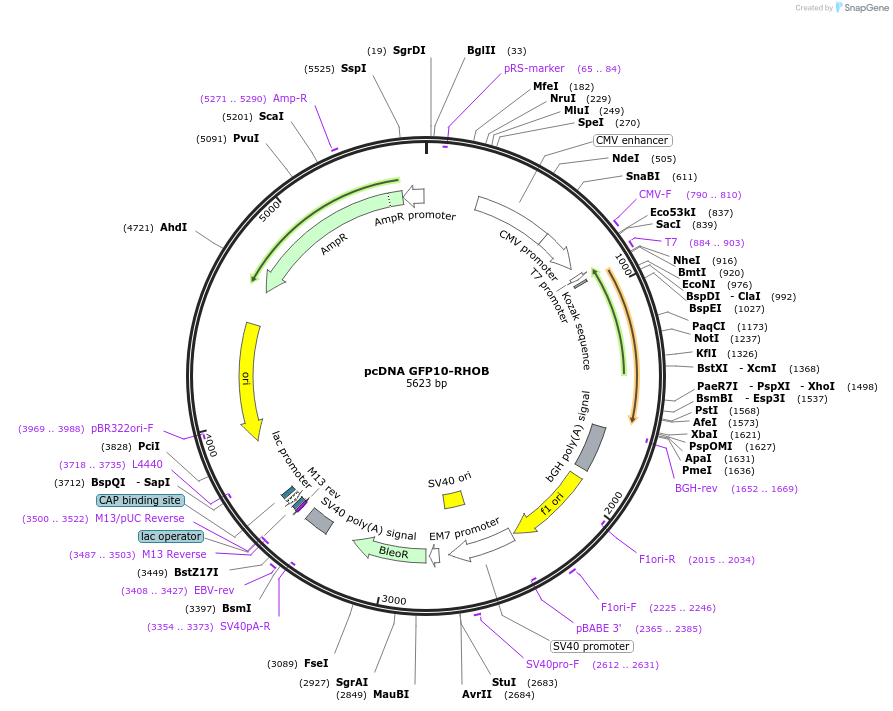pcDNA GFP10-RHOB
(Plasmid
#182237)
-
PurposeExpresses RHOB GTPase with tripartite split GFP10 tag
-
Depositing Lab
-
Sequence Information
Ordering
| Item | Catalog # | Description | Quantity | Price (USD) | |
|---|---|---|---|---|---|
| Plasmid | 182237 | Standard format: Plasmid sent in bacteria as agar stab | 1 | $89 | |
Backbone
-
Vector backbonepcDNA 3.1
- Backbone size w/o insert (bp) 5119
- Total vector size (bp) 5704
-
Vector typeMammalian Expression
-
Selectable markersZeocin
Growth in Bacteria
-
Bacterial Resistance(s)Ampicillin, 100 μg/mL
-
Growth Temperature37°C
-
Growth Strain(s)DH5alpha
-
Copy numberHigh Copy
Gene/Insert
-
Gene/Insert nameras homolog family member B
-
SpeciesH. sapiens (human)
-
Insert Size (bp)588
-
GenBank IDNM_004040.4
-
Entrez GeneRHOB (a.k.a. ARH6, ARHB, MST081, MSTP081, RHOH6)
- Promoter CMV
-
Tag
/ Fusion Protein
- GFP10 (split-GFP tripartite) (N terminal on insert)
Cloning Information
- Cloning method Restriction Enzyme
- 5′ cloning site BspeI (not destroyed)
- 3′ cloning site XbaI (not destroyed)
- 5′ sequencing primer CMV-F
- 3′ sequencing primer pcDNA 3.1 rev
- (Common Sequencing Primers)
Resource Information
-
Supplemental Documents
Terms and Licenses
-
Academic/Nonprofit Terms
-
Industry Terms
- Not Available to Industry
Trademarks:
- Zeocin® is an InvivoGen trademark.
These plasmids were created by your colleagues. Please acknowledge the Principal Investigator, cite the article in which the plasmids were described, and include Addgene in the Materials and Methods of your future publications.
-
For your Materials & Methods section:
pcDNA GFP10-RHOB was a gift from Stéphanie Cabantous (Addgene plasmid # 182237 ; http://n2t.net/addgene:182237 ; RRID:Addgene_182237) -
For your References section:
High-content tripartite split-GFP cell-based assays to screen for modulators of small GTPase activation. Koraichi F, Gence R, Bouchenot C, Grosjean S, Lajoie-Mazenc I, Favre G, Cabantous S. J Cell Sci. 2018 Jan 8;131(1). pii: jcs.210419. doi: 10.1242/jcs.210419. 10.1242/jcs.210419 PubMed 29192060







